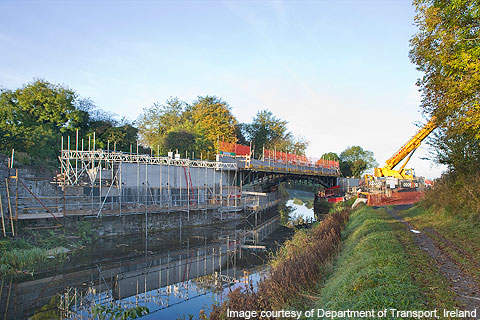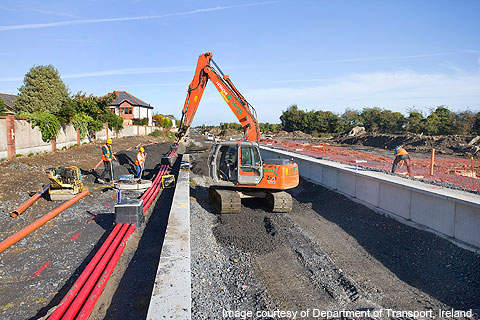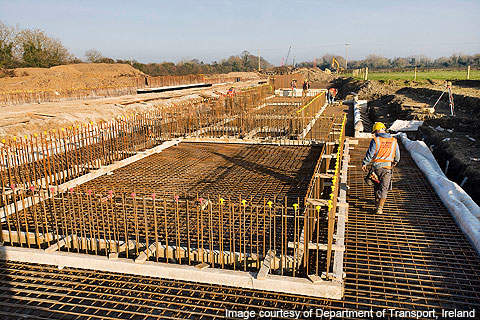The Dublin-Navan railway line is a two-phase project taken on by the Irish Government under its Transport 21 programme. Phase I of the project includes the construction of a 7.5km double-track railway line between Clonsilla near Dublin and the M3 interchange at Pace near Dunboyne in Meath County. Phase II will include a 34km twin-track extension towards Navan.
Phase I of the project is estimated to cost around €160m, while phase II will total around €500m. Phase I of the project is expected to be completed by September 2010 and phase II by 2015.
Dublin-Navan railway line project
The Dublin-Navan railway project was proposed to address the growing traffic problems in the region. The majority of the people living in Meath County and nearby regions are dependent on private transportation with almost 70% travelling to work by car. The percentage of car users in the region is higher than that in any other town in the country.
By 2013, the population of Meath County is expected to reach 210,000 from 162,000. This is expected to further increase commuter traffic towards Dublin and nearby locations. Even if major improvements are undertaken on the road network, it is not expected to support the growing traffic numbers.
Iarnród Éireann, or Irish Rail, completed an environmental impact assessment and feasibility study in 2005. The project was approved in 2008 and preliminary works on the line were initiated in December 2008. A scoping study was carried out by Irish Rail in December 2007 to examine the feasibility of extension of the line towards Navan. Nine routes were examined and one route was finalised and approved in May 2009.
Phase I will involve the construction of bridges, accommodation roads, earthworks, and track and signalling installations. Fencing and boundary building, drainage and station construction and car parks will also be covered in this phase. Track laying for phase I is nearing completion and some of the accommodation bridges have also been completed.
In March 2010, Irish Rail secured €15.5m for preparing the planning permission for the Navan extension. The design work on extension was started in April 2010.
The route of the railway line is expected to be the same as that of the old Navan railway line, which was closed in 1963. Planning permission for extension of the line will be filed in the middle of 2011.
Dublin-Navan railway line infrastructure
Phase I of the project will include the construction of three stations at Hansfield, Dunboyne and Pace. The stations will feature lifts and footbridges, and will be accessible to the mobility impaired. Other facilities at the stations will include shelters, ticket vending machines, CCTV, signage and booking office.
The railway station at Pace will have park and ride facilities with 1,200 spaces. The park and ride will be the biggest of its kind in the country. Dunboyne station will have a 300-space car park.
Phase II of the project will include the construction of four stations at Dunshaughlin, Kilmessan, Navan town centre and at the north border of Navan.
Rolling stock
Eight carriage commuter trains or diesel multiple units will be operated on the new railway line. Similar trains are already operating on the existing rail network in the country. Trains will be operated at a 15min headway during peak hours and a 30min headway during off-peak hours.
Dublin-Naval signalling and communications
The project will feature continuous train detection on all lines. Signalling information will be provided to the on-board signalling system to ensure the smooth operation of the trains. Wayside telephones and a secure radio system will also be provided for communication between the signaller and the train driver.










